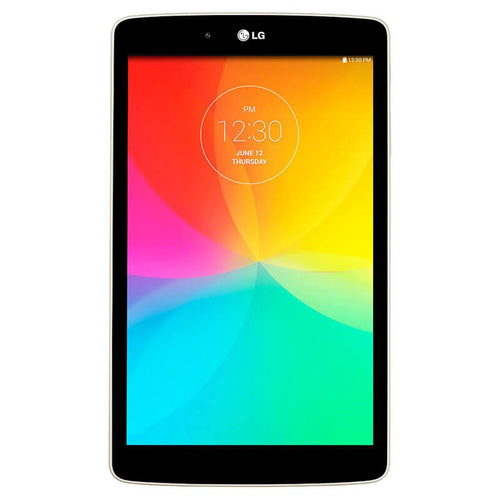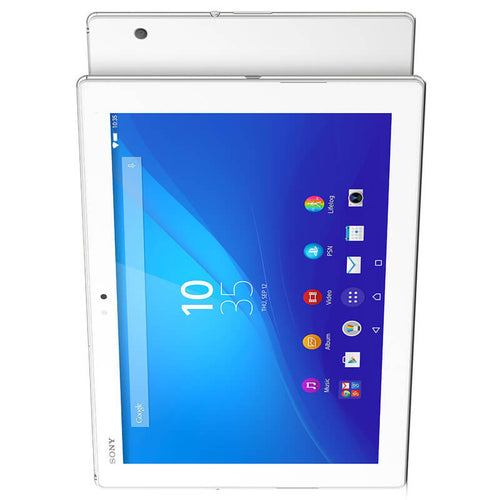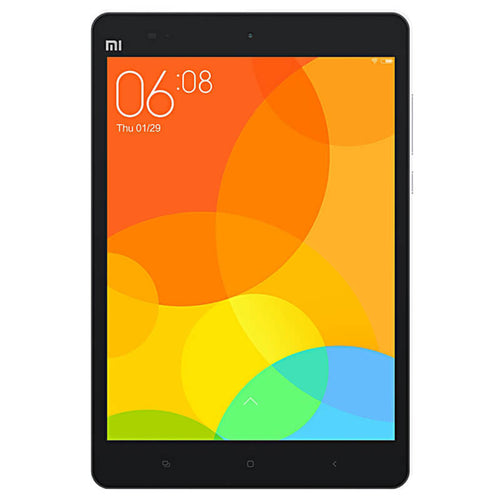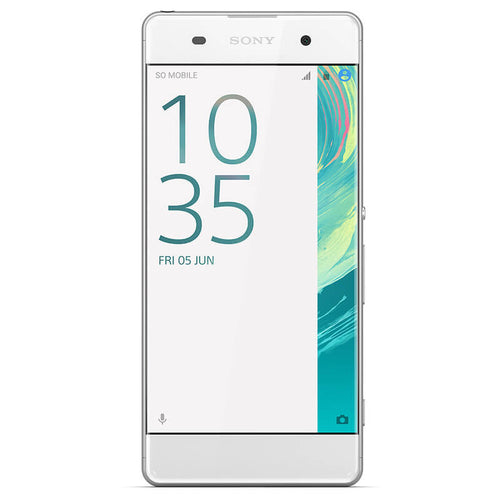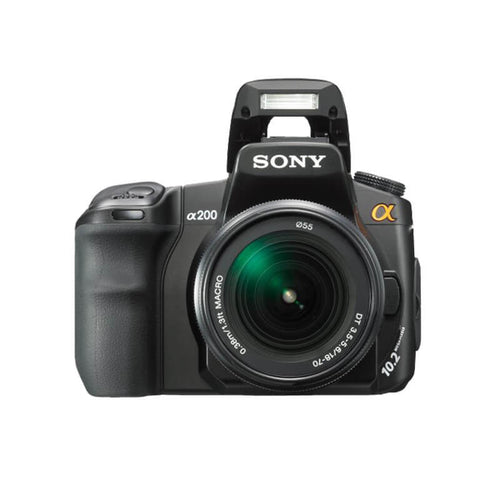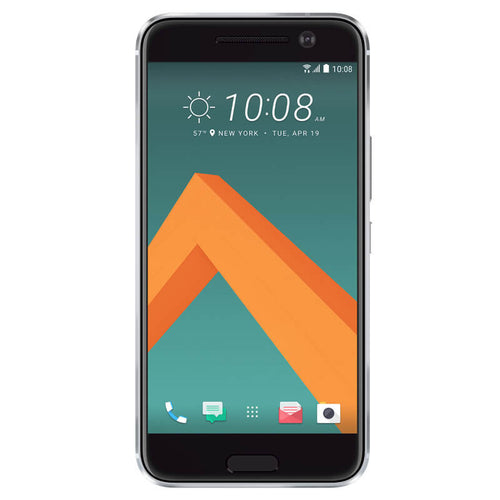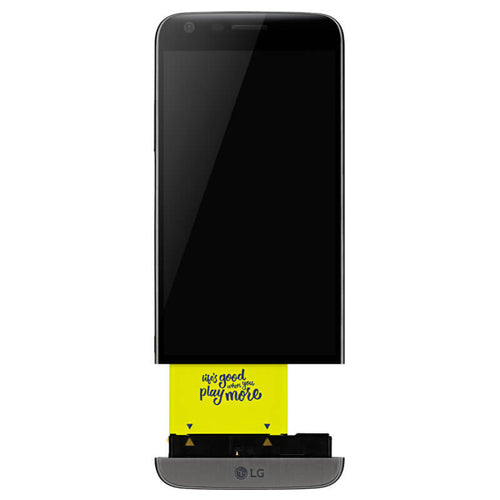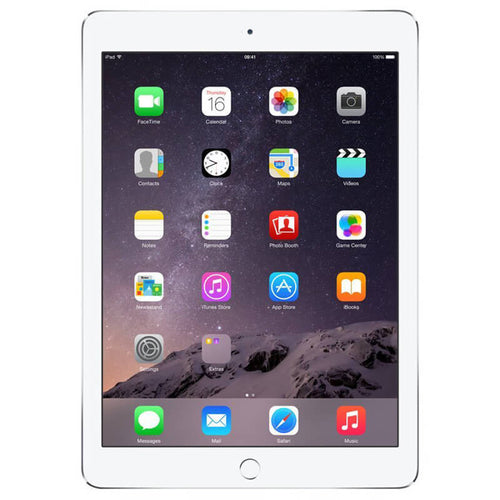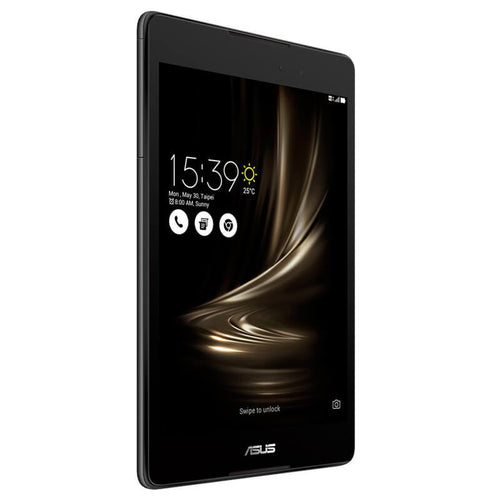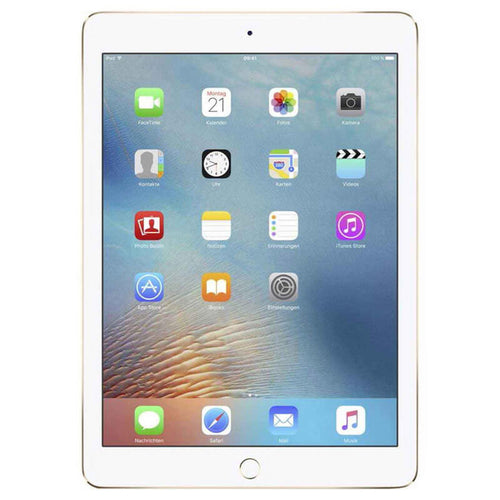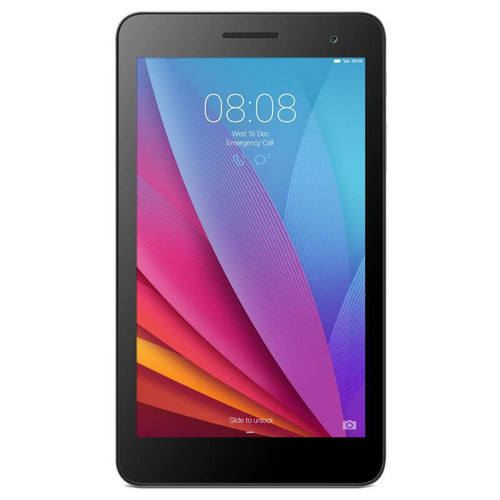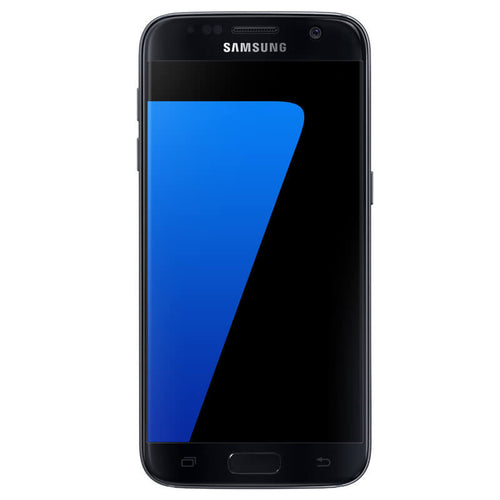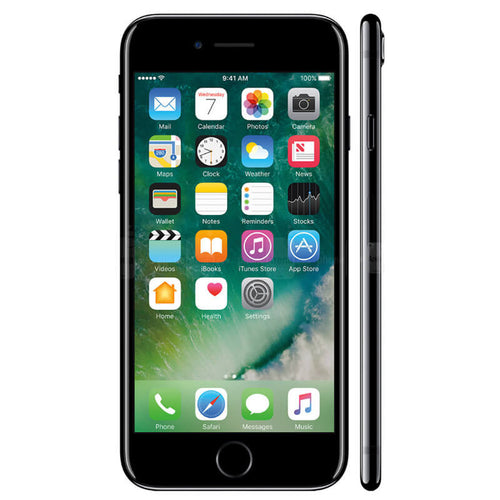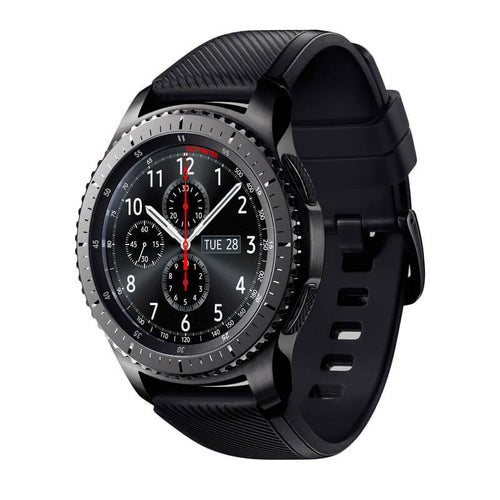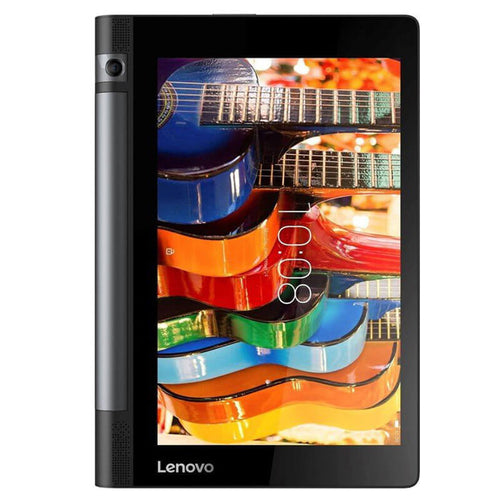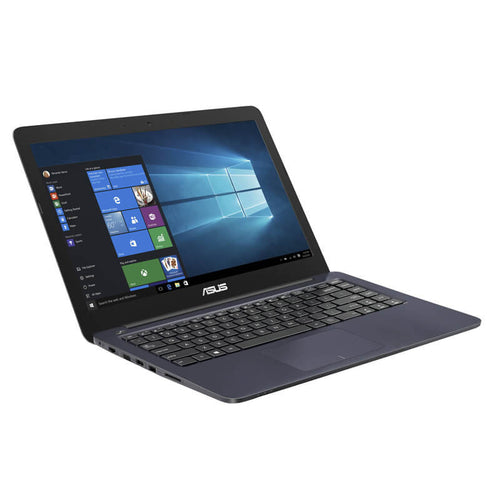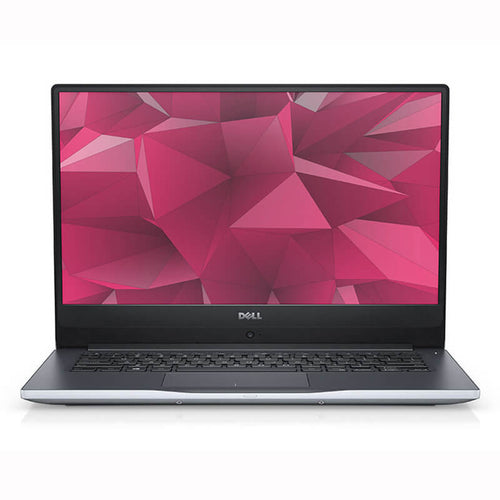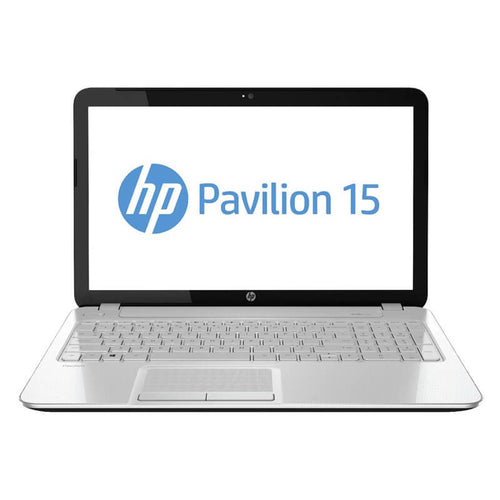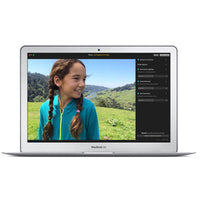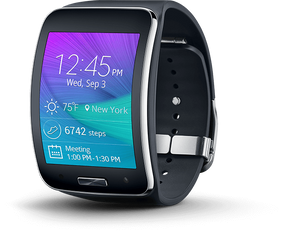Collection - Left Sidebar
- Technology: GSM / HSPA / LTE
- Dimensions: 256.2 x 167.9 x 6.7 mm
- Weight: 510 g
- Display: IPS LCD 10.1 inches
- Resolution: 1200 x 1920
- OS: Android OS, v6.0.1 (Marshmallow)
- Chipset: Snapdragon 617
- CPU: Octa-core
- Internal: 32 GB, 2 GB RAM
- Camera: 5 MP - 5 MP
- Technology: GSM / HSPA / LTE
- Dimensions: 256.2 x 167.9 x 6.7 mm
- Weight: 510 g
- Display: IPS LCD 10.1 inches
- Resolution: 1200 x 1920
- OS: Android OS, v6.0.1 (Marshmallow)
- Chipset: Snapdragon 617
- CPU: Octa-core
- Internal: 32 GB, 2 GB RAM
- Camera: 5 MP - 5 MP
- Technology: GSM / HSPA / LTE
- Dimensions: 254 x 167 x 6.1 mm
- Weight: 393 g
- Display: IPS LCD 10.1 inches
- Resolution: 2560 x 1600
- OS: Android OS, v5.0 (Lollipop)
- Chipset: Snapdragon 810
- CPU: Octa-core
- Internal: 32 GB, 3 GB RAM
- Camera: 8.1 MP - 5.1 MP
The Sony Xperia Z4 Tablet faces the daunting task of flying the Z4 banner, when the Xperia Z4 smartphone is just an incremental update limited to the Japanese market. The 10.1-inch tablet seems up for the task however with contemporary specs, attractive styling and razor-thin profile.
The Xperia Z4 Tablet builds on the virtues of the Z2 Tablet from a year ago and the improvements are much easier to spot than in the Xperia smartphone range where Sony's twice-a-year release cycle has meant more gradual evolution.
We weren't particularly satisfied with the low 224ppi of the predecessor, rather thin even by last year's standards and we're happy to note that the tablet's display resolution has been brought up to date and is now 2,560 x 1,600 pixels.
Sony's design language has remained unchanged for a while, and while it may be getting a bit tired, it's stylish nonetheless. A few excess millimeters have been trimmed off the footprint, while thickness has been brought down to match the Apple iPad Air 2 at 6.1mm. And perhaps most importantly, an IP68 certification means you can submerge it in water for up to 30min and 1.5m in depth, without fearing for its life.
Most impressively, the tablet weighs just 393g, a good 10% lighter than both the predecessor and the Cupertino rival. Meanwhile, battery capacity hasn't been sacrificed and has remained at 6,000mAh, but will that be enough to power 80% percent more pixels and more capable chipset?
Speaking of chipsets, a whole year warrants an improvement in the innards and the Snapdragon 810 has replaced the S801 of the Xperia Z2 Tablet. We're only left to hope that Sony has managed to leverage the large surface area to benefit the heat dissipation and we finally the Snapdragon live up to its potential.
We have the LTE version of the tablet which comes with the added benefit of cellular connectivity. There's also a WI-Fi only model, but our findings should apply equally well to that one too. For the sake of simplicity we'll drop the LTE abbreviation for the rest of this review.
- Technology: GSM / HSPA / LTE
- Dimensions: 254 x 167 x 6.1 mm
- Weight: 393 g
- Display: IPS LCD 10.1 inches
- Resolution: 2560 x 1600
- OS: Android OS, v5.0 (Lollipop)
- Chipset: Snapdragon 810
- CPU: Octa-core
- Internal: 32 GB, 3 GB RAM
- Camera: 8.1 MP - 5.1 MP
The Sony Xperia Z4 Tablet faces the daunting task of flying the Z4 banner, when the Xperia Z4 smartphone is just an incremental update limited to the Japanese market. The 10.1-inch tablet seems up for the task however with contemporary specs, attractive styling and razor-thin profile.
The Xperia Z4 Tablet builds on the virtues of the Z2 Tablet from a year ago and the improvements are much easier to spot than in the Xperia smartphone range where Sony's twice-a-year release cycle has meant more gradual evolution.
We weren't particularly satisfied with the low 224ppi of the predecessor, rather thin even by last year's standards and we're happy to note that the tablet's display resolution has been brought up to date and is now 2,560 x 1,600 pixels.
Sony's design language has remained unchanged for a while, and while it may be getting a bit tired, it's stylish nonetheless. A few excess millimeters have been trimmed off the footprint, while thickness has been brought down to match the Apple iPad Air 2 at 6.1mm. And perhaps most importantly, an IP68 certification means you can submerge it in water for up to 30min and 1.5m in depth, without fearing for its life.
Most impressively, the tablet weighs just 393g, a good 10% lighter than both the predecessor and the Cupertino rival. Meanwhile, battery capacity hasn't been sacrificed and has remained at 6,000mAh, but will that be enough to power 80% percent more pixels and more capable chipset?
Speaking of chipsets, a whole year warrants an improvement in the innards and the Snapdragon 810 has replaced the S801 of the Xperia Z2 Tablet. We're only left to hope that Sony has managed to leverage the large surface area to benefit the heat dissipation and we finally the Snapdragon live up to its potential.
We have the LTE version of the tablet which comes with the added benefit of cellular connectivity. There's also a WI-Fi only model, but our findings should apply equally well to that one too. For the sake of simplicity we'll drop the LTE abbreviation for the rest of this review.
- Technology: GSM / CDMA / HSPA / EVDO / LTE
- Dimensions: 143.8 x 69.5 x 8.5 mm
- Weight: 143 g
- Display: AMOLED 5.0 inches
- Resolution: 1080 x 1920
- OS: Android OS, v7.1 (Nougat)
- Chipset: Snapdragon 821
- CPU: Quad-core
- Internal: 32/128 GB, 4 GB RAM
- Camera: 12.3 MP, f/2.0 - 8 MP, f/2.4
- Technology: GSM / CDMA / HSPA / EVDO / LTE
- Dimensions: 143.8 x 69.5 x 8.5 mm
- Weight: 143 g
- Display: AMOLED 5.0 inches
- Resolution: 1080 x 1920
- OS: Android OS, v7.1 (Nougat)
- Chipset: Snapdragon 821
- CPU: Quad-core
- Internal: 32/128 GB, 4 GB RAM
- Camera: 12.3 MP, f/2.0 - 8 MP, f/2.4
- Technology: GSM / HSPA / LTE
- Dimensions: 151.7 x 75 x 8 mm
- Weight: 167 g
- Display: PLS TFT 5.5 inches
- Resolution: 1080 x 1920
- OS: Android OS, v6.0.1 (Marshmallow)
- Chipset: Exynos 7870 Octa
- CPU: 1.6 GHz Cortex-A53
- Internal: 16/32 GB, 3 GB RAM
- Camera: 13 MP, f/1.9 - 8 MP, f/1.9
- Technology: GSM / HSPA / LTE
- Dimensions: 151.7 x 75 x 8 mm
- Weight: 167 g
- Display: PLS TFT 5.5 inches
- Resolution: 1080 x 1920
- OS: Android OS, v6.0.1 (Marshmallow)
- Chipset: Exynos 7870 Octa
- CPU: 1.6 GHz Cortex-A53
- Internal: 16/32 GB, 3 GB RAM
- Camera: 13 MP, f/1.9 - 8 MP, f/1.9
- Technology: GSM / HSPA / LTE
- Dimensions: 150 x 76 x 8.7 mm
- Weight: 164 g
- Display: IPS LC 5.5 inches
- Resolution: 1080 x 1920
- OS: Android OS, v5.1.1 (Lollipop)
- Chipset: Snapdragon 650
- CPU: Hexa-core
- Internal: 16GB/2GB - 32GB/3GB
- Camera: 16 MP, f/2.0 - 5 MP, f/2.0
There's no way you have missed the Xiaomi Redmi Note 3. It's been the bang-for-buck benchmark for a while now, delivering a feature set and performance way above what its price tag suggests.
To refresh your memory Xiaomi launched the Redmi Note 3 at the turn of last year and it was powered by a MediaTek Helio X10. In the spring of 2016, a Qualcomm-driven Redmi Note 3 followed and broke the company's sales record in India. Now this full review admittedly comes a little late, but the Xiaomi Redmi Note 3 is still on many people's radar, so we figured a way to compare the Mediatek-powered original and the Snapdragon edition might come in handy.
Besides the chipset, there's also a new camera sensor, a 16MP unit even if it is limited to 1080p video recording. Another difference is the second SIM card tray can now take microSD cards. It's the hybrid kind, which isn't ideal for people who want to have it all. Other than that, the hardware is perfectly familiar.
- Technology: GSM / HSPA / LTE
- Dimensions: 150 x 76 x 8.7 mm
- Weight: 164 g
- Display: IPS LC 5.5 inches
- Resolution: 1080 x 1920
- OS: Android OS, v5.1.1 (Lollipop)
- Chipset: Snapdragon 650
- CPU: Hexa-core
- Internal: 16GB/2GB - 32GB/3GB
- Camera: 16 MP, f/2.0 - 5 MP, f/2.0
There's no way you have missed the Xiaomi Redmi Note 3. It's been the bang-for-buck benchmark for a while now, delivering a feature set and performance way above what its price tag suggests.
To refresh your memory Xiaomi launched the Redmi Note 3 at the turn of last year and it was powered by a MediaTek Helio X10. In the spring of 2016, a Qualcomm-driven Redmi Note 3 followed and broke the company's sales record in India. Now this full review admittedly comes a little late, but the Xiaomi Redmi Note 3 is still on many people's radar, so we figured a way to compare the Mediatek-powered original and the Snapdragon edition might come in handy.
Besides the chipset, there's also a new camera sensor, a 16MP unit even if it is limited to 1080p video recording. Another difference is the second SIM card tray can now take microSD cards. It's the hybrid kind, which isn't ideal for people who want to have it all. Other than that, the hardware is perfectly familiar.
- Technology: GSM / HSPA / LTE
- Dimensions: 146 x 72 x 8.1 mm
- Weight: 161 g
- Display: IPS LCD 5.2 inches
- Resolution: 1080 x 1920
- OS: Android OS, v6.0.1 (Marshmallow)
- Chipset: Snapdragon 820
- CPU: Quad-core
- Internal: 32/64 GB
- Camera: 23 MP, f/2.0 - 13 MP, f/2.0
Sony's latest flagship, the Xperia Z6 comes with refined design, improved camera, and a due update in specs. Wait, back up a little there - it's actually called the Xperia XZ this time around but, yeah, the rest of that is true.
When Sony announced the new X-series, some suggested that the Xperia X Performance was meant to take on the likes of the Galaxy S7's and HTC 10's, but we knew that couldn't be the case. Okay, 'suspected' might be more accurate there. Obviously, now we all know that the Xperia XZ is Sony's top-dog for this season, and the Z in its name quickly reveals its ancestry.
Indeed, the XZ has a lot in common with the Z5. The display, for one, is the same size and resolution as the last generation - not necessarily a bad thing, but the XZ also comes with 3GB of RAM - modern-day flagships will crack a condescending smile seeing that in the spec sheet.
No one will laugh at the rest of it, though - top-of-the-line Snapdragon 820 chipset, 23MP camera with a trio of focusing technologies and 4K video recording (one could think the Z is required for that, had it not been for the M5), high-res 13MP front camera, Type-C connectivity, fingerprint reader, IP68 rating, stereo speakers - name one thing missing.
- Technology: GSM / HSPA / LTE
- Dimensions: 146 x 72 x 8.1 mm
- Weight: 161 g
- Display: IPS LCD 5.2 inches
- Resolution: 1080 x 1920
- OS: Android OS, v6.0.1 (Marshmallow)
- Chipset: Snapdragon 820
- CPU: Quad-core
- Internal: 32/64 GB
- Camera: 23 MP, f/2.0 - 13 MP, f/2.0
Sony's latest flagship, the Xperia Z6 comes with refined design, improved camera, and a due update in specs. Wait, back up a little there - it's actually called the Xperia XZ this time around but, yeah, the rest of that is true.
When Sony announced the new X-series, some suggested that the Xperia X Performance was meant to take on the likes of the Galaxy S7's and HTC 10's, but we knew that couldn't be the case. Okay, 'suspected' might be more accurate there. Obviously, now we all know that the Xperia XZ is Sony's top-dog for this season, and the Z in its name quickly reveals its ancestry.
Indeed, the XZ has a lot in common with the Z5. The display, for one, is the same size and resolution as the last generation - not necessarily a bad thing, but the XZ also comes with 3GB of RAM - modern-day flagships will crack a condescending smile seeing that in the spec sheet.
No one will laugh at the rest of it, though - top-of-the-line Snapdragon 820 chipset, 23MP camera with a trio of focusing technologies and 4K video recording (one could think the Z is required for that, had it not been for the M5), high-res 13MP front camera, Type-C connectivity, fingerprint reader, IP68 rating, stereo speakers - name one thing missing.
- Resolution: 10.20 Megapixels
- Sensor size: APS-C
- Kit Lens: 3.88x zoom 18-70mm
- Viewfinder: Optical / LCD
- ISO: 100 - 3200
- Shutter: 1/4000 - 30 seconds
- Dimensions: 133 x 95 x 71 mm
- Weight: 625 g
- Resolution: 10.20 Megapixels
- Sensor size: APS-C
- Kit Lens: 3.88x zoom 18-70mm
- Viewfinder: Optical / LCD
- ISO: 100 - 3200
- Shutter: 1/4000 - 30 seconds
- Dimensions: 133 x 95 x 71 mm
- Weight: 625 g
- Technology: GSM / CDMA / HSPA / LTE
- Dimensions: 145.9 x 71.9 x 9 mm
- Weight: 161 g
- Display: Super LCD5 5.2 inches
- Resolution: 1440 x 2560
- OS: Android OS, v6.0.1 (Marshmallow)
- Chipset: Snapdragon 820
- CPU: Quad-core
- Internal: 32/64 GB, 4 GB RAM
- Camera: 12 MP, f/1.8 - 5 MP, f/1.8
The HTC 10 is everything an HTC fan has been longing for. A full smartphone package experience without compromise. The problem with this idea is that it doesn't exist, there will always be some phone with a better camera or better battery or a larger display. But we can always look at this idea subjectively and find the right balance between what the phone offers versus compromises you might be making.
It's been quiet in HTC camp lately but it seems the company has been gearing up for its big comeback this year. HTC's relevancy had been slipping away the past couple of years and the Taiwanese company thought it should buckle down and listen to what its customers have been saying for a while. And the fans, on the other hand, are excited to learn that "HTC is back!"
Before the HTC 10, pretty much every iteration of the HTC One series in recent years brought some form of compromise. The HTC One M7 had a great camera, the first of its kind, the problem was only 4MP did not allow any sort of cropping without anyone noticing. The HTC One M8 had the same 4 megapixel camera and HTC made a bad choice to even remove OIS from the flagship.
The HTC One M9 was a step in the right direction, but it was not enough. Even with a bigger camera sensor this time around, the camera performance was still lackluster. The One M9 was also plagued with overheating problems caused by an early version of the Snapdragon 810 which had to be downclocked just to avoid the heating issues. As a result, the HTC's M9 unofficially became the flagship to avoid.
- Technology: GSM / CDMA / HSPA / LTE
- Dimensions: 145.9 x 71.9 x 9 mm
- Weight: 161 g
- Display: Super LCD5 5.2 inches
- Resolution: 1440 x 2560
- OS: Android OS, v6.0.1 (Marshmallow)
- Chipset: Snapdragon 820
- CPU: Quad-core
- Internal: 32/64 GB, 4 GB RAM
- Camera: 12 MP, f/1.8 - 5 MP, f/1.8
The HTC 10 is everything an HTC fan has been longing for. A full smartphone package experience without compromise. The problem with this idea is that it doesn't exist, there will always be some phone with a better camera or better battery or a larger display. But we can always look at this idea subjectively and find the right balance between what the phone offers versus compromises you might be making.
It's been quiet in HTC camp lately but it seems the company has been gearing up for its big comeback this year. HTC's relevancy had been slipping away the past couple of years and the Taiwanese company thought it should buckle down and listen to what its customers have been saying for a while. And the fans, on the other hand, are excited to learn that "HTC is back!"
Before the HTC 10, pretty much every iteration of the HTC One series in recent years brought some form of compromise. The HTC One M7 had a great camera, the first of its kind, the problem was only 4MP did not allow any sort of cropping without anyone noticing. The HTC One M8 had the same 4 megapixel camera and HTC made a bad choice to even remove OIS from the flagship.
The HTC One M9 was a step in the right direction, but it was not enough. Even with a bigger camera sensor this time around, the camera performance was still lackluster. The One M9 was also plagued with overheating problems caused by an early version of the Snapdragon 810 which had to be downclocked just to avoid the heating issues. As a result, the HTC's M9 unofficially became the flagship to avoid.
- Technology: GSM / CDMA / HSPA / LTE
- Dimensions: 149.4 x 73.9 x 7.7 mm
- Weight: 159 g
- Display: IPS LCD 5.3 inches
- Resolution: 1440 x 2560
- OS: Android OS, v6.0.1 (Marshmallow)
- Chipset: Snapdragon 820
- CPU: Quad-core
- Internal: 32 GB, 4 GB RAM
- Camera: Dual 16 MP (29mm, f/1.8) + 8 MP (12mm, f/2.4)
Someone at LG must have thought: "Leather is so last-year, let’s do something nobody has done – or long quit trying." And here we have the LG G5. It has the looks of a brand new flagship, the heart of a dragon and an adventurous dual camera setup suited for every occasion. But there’s more than what meets the eye, the Magic Slot. The LG G5 is a modular smartphone, which lets you plug a handful of external add-ons: a semi-pro camera grip with shutter buttons and a bigger battery, or an external sound amplifier by B&O.
How long since you last saw the inside of your phone? It seems like while everyone was busy experimenting with designs and mixing up various alloys, there was something unusual cooking in the LG labs.
Brand new or just well forgotten old, innovating for its own sake or trying to defy the impossible, the modular design won't let you upgrade the processor or the camera, but it certainly offers plenty of options. The add-ons will mostly be sold separately but initial prices don't seem too bad. You might even get a bonus camera grip - LG will throw one in the bundle in select markets. Who knows, we might see the return of the xenon flash or some smart docking solutions along the lines of Microsoft's Continuum.
What you do get right out of the box is the base equipment and in the case of the G5, it's anything but modest. Perhaps the star of the show is the camera combo. The 16MP camera borrowed from the LG V10 does top-notch stills, and the secondary 8MP sensor offers unmatched super wide shots while adding a hybrid zoom of sorts to the package.
- Technology: GSM / CDMA / HSPA / LTE
- Dimensions: 149.4 x 73.9 x 7.7 mm
- Weight: 159 g
- Display: IPS LCD 5.3 inches
- Resolution: 1440 x 2560
- OS: Android OS, v6.0.1 (Marshmallow)
- Chipset: Snapdragon 820
- CPU: Quad-core
- Internal: 32 GB, 4 GB RAM
- Camera: Dual 16 MP (29mm, f/1.8) + 8 MP (12mm, f/2.4)
Someone at LG must have thought: "Leather is so last-year, let’s do something nobody has done – or long quit trying." And here we have the LG G5. It has the looks of a brand new flagship, the heart of a dragon and an adventurous dual camera setup suited for every occasion. But there’s more than what meets the eye, the Magic Slot. The LG G5 is a modular smartphone, which lets you plug a handful of external add-ons: a semi-pro camera grip with shutter buttons and a bigger battery, or an external sound amplifier by B&O.
How long since you last saw the inside of your phone? It seems like while everyone was busy experimenting with designs and mixing up various alloys, there was something unusual cooking in the LG labs.
Brand new or just well forgotten old, innovating for its own sake or trying to defy the impossible, the modular design won't let you upgrade the processor or the camera, but it certainly offers plenty of options. The add-ons will mostly be sold separately but initial prices don't seem too bad. You might even get a bonus camera grip - LG will throw one in the bundle in select markets. Who knows, we might see the return of the xenon flash or some smart docking solutions along the lines of Microsoft's Continuum.
What you do get right out of the box is the base equipment and in the case of the G5, it's anything but modest. Perhaps the star of the show is the camera combo. The 16MP camera borrowed from the LG V10 does top-notch stills, and the secondary 8MP sensor offers unmatched super wide shots while adding a hybrid zoom of sorts to the package.
- Technology: GSM / HSPA / LTE
- Dimensions: 212.8 x 125.6 x 6.6 mm
- Weight: 298 g
- Display: Super AMOLED 8.4 inches
- Resolution: 1600 x 2560
- OS: Android OS, v4.4.2 (KitKat)
- Chipset: Snapdragon 800
- CPU: Quad-core 2.3 GHz
- Internal: 16/32 GB, 3 GB RAM
- Camera: 8 MP - 2.1 MP
Ever since the 2011 unveiling of the Galaxy Tab 7.7 we've been waiting for the next generation of Super AMOLED tablets. Three years later they have arrived - the Samsung Galaxy Tab S duo comes in 10.5" and 8.4" sizes and like the Tab 7.7 before them, they are stunningly thin.
Separate from the Galaxy Tab and Galaxy Note lines, the Galaxy Tab S tablets still share a lot with them. The powerful hardware platform, combined with proprietary TouchWiz features like Multi Window, instantly put the two at the forefront of functionality. Just look at that specs sheet.
- Technology: GSM / HSPA / LTE
- Dimensions: 212.8 x 125.6 x 6.6 mm
- Weight: 298 g
- Display: Super AMOLED 8.4 inches
- Resolution: 1600 x 2560
- OS: Android OS, v4.4.2 (KitKat)
- Chipset: Snapdragon 800
- CPU: Quad-core 2.3 GHz
- Internal: 16/32 GB, 3 GB RAM
- Camera: 8 MP - 2.1 MP
Ever since the 2011 unveiling of the Galaxy Tab 7.7 we've been waiting for the next generation of Super AMOLED tablets. Three years later they have arrived - the Samsung Galaxy Tab S duo comes in 10.5" and 8.4" sizes and like the Tab 7.7 before them, they are stunningly thin.
Separate from the Galaxy Tab and Galaxy Note lines, the Galaxy Tab S tablets still share a lot with them. The powerful hardware platform, combined with proprietary TouchWiz features like Multi Window, instantly put the two at the forefront of functionality. Just look at that specs sheet.
- Technology: GSM / CDMA / HSPA / EVDO / LTE
- Dimensions: 240 x 169.5 x 6.1 mm
- Weight: 437 g
- Display: LED-backlit IPS LCD 9.7 inches
- Resolution: 1536 x 2048
- OS: iOS 8.1
- Chipset: Apple A8X
- CPU: Triple-core 1.5 GHz Typhoon
- Internal: 16/32/64/128 GB, 2 GB RAM
- Camera: 8 MP, f/2.4 - 1.2 MP, f/2.2
Another millimeter thinner, the new iPad Air 2 has a body that's even more befitting the ethereal moniker the iPad bears second year in a row. Outside of that little fact however, the changes may not be as easy to spot. And that's hardly a surprise.
Apple's laser focus on making the ultimate tablet keeps the entire tablet industry moving forward. But in their camp, large strides are usually followed by baby steps and not all products end up as the breakthroughs we would have liked to see. One thing's for sure though, Apple certainly likes to keep us on the edge of our seats when it comes to what their next gen devices would look or feel like.
This year, the Air 2 is hardly hitting like an airstrike, but it still does a mighty fine job of keeping up the alpha male image. True, besides the slimmer profile the changes are hard to see. A nice exception is the screen, where the specs may sound the same on paper, but improvements are visible to the naked eye in terms of reflectivity and outdoor legibility.
The iPad Air 2 also has a better camera, an 8 megapixel auto focus unit, for what it's worth on a ten-incher, and as usual, Apple's latest and greatest chipset to make sure things are running faster than ever before.
So that about sums up the noteworthy things the iPad Air 2 brings to the table. But here's the cheat sheet of its key specs anyway and what we didn't quite like at first glance.
- Technology: GSM / CDMA / HSPA / EVDO / LTE
- Dimensions: 240 x 169.5 x 6.1 mm
- Weight: 437 g
- Display: LED-backlit IPS LCD 9.7 inches
- Resolution: 1536 x 2048
- OS: iOS 8.1
- Chipset: Apple A8X
- CPU: Triple-core 1.5 GHz Typhoon
- Internal: 16/32/64/128 GB, 2 GB RAM
- Camera: 8 MP, f/2.4 - 1.2 MP, f/2.2
Another millimeter thinner, the new iPad Air 2 has a body that's even more befitting the ethereal moniker the iPad bears second year in a row. Outside of that little fact however, the changes may not be as easy to spot. And that's hardly a surprise.
Apple's laser focus on making the ultimate tablet keeps the entire tablet industry moving forward. But in their camp, large strides are usually followed by baby steps and not all products end up as the breakthroughs we would have liked to see. One thing's for sure though, Apple certainly likes to keep us on the edge of our seats when it comes to what their next gen devices would look or feel like.
This year, the Air 2 is hardly hitting like an airstrike, but it still does a mighty fine job of keeping up the alpha male image. True, besides the slimmer profile the changes are hard to see. A nice exception is the screen, where the specs may sound the same on paper, but improvements are visible to the naked eye in terms of reflectivity and outdoor legibility.
The iPad Air 2 also has a better camera, an 8 megapixel auto focus unit, for what it's worth on a ten-incher, and as usual, Apple's latest and greatest chipset to make sure things are running faster than ever before.
So that about sums up the noteworthy things the iPad Air 2 brings to the table. But here's the cheat sheet of its key specs anyway and what we didn't quite like at first glance.
- Technology: GSM / HSPA / LTE
- Dimensions: 205.4 x 136.4 x 7.6 mm
- Weight: 320 g
- Display: IPS LCD 7.9 inches
- Resolution: 1536 x 2048
- OS: Android OS, v6.0 (Marshmallow)
- Chipset: Snapdragon 650
- CPU: Hexa-core
- Internal: 32 GB, 4 GB RAM
- Camera: 8 MP - 2 MP
- Technology: GSM / HSPA / LTE
- Dimensions: 205.4 x 136.4 x 7.6 mm
- Weight: 320 g
- Display: IPS LCD 7.9 inches
- Resolution: 1536 x 2048
- OS: Android OS, v6.0 (Marshmallow)
- Chipset: Snapdragon 650
- CPU: Hexa-core
- Internal: 32 GB, 4 GB RAM
- Camera: 8 MP - 2 MP
- Technology: GSM / HSPA / LTE
- Dimensions: 153.8 x 75.5 x 7.6 mm
- Weight: 154 g
- Display: IPS LCD 5.5 inches
- Resolution: 720 x 1280
- OS: Android OS, v6.0 (Marshmallow)
- Chipset: Octa-core
- CPU: Octa-core
- Internal: 32 GB, 4 GB RAM
- Camera: 13MB - 20 MP
- Technology: GSM / HSPA / LTE
- Dimensions: 153.8 x 75.5 x 7.6 mm
- Weight: 154 g
- Display: IPS LCD 5.5 inches
- Resolution: 720 x 1280
- OS: Android OS, v6.0 (Marshmallow)
- Chipset: Octa-core
- CPU: Octa-core
- Internal: 32 GB, 4 GB RAM
- Camera: 13MB - 20 MP
- Technology: GSM / HSPA / LTE
- Dimensions: 144.6 x 69.2 x 7.3 mm
- Weight: 129 g
- Display: IPS LCD 5.15 inches
- Resolution: 1080 x 1920
- OS: Android OS, v6.0 (Marshmallow)
- Chipset: Snapdragon 820
- CPU: Quad-core
- Internal: 32GB/64GB/128GB
- Camera: 16 MP, f/2.0 - 4 MP, f/2.0
It's been a while since we met the last of the Mi kind. Even though the Xiaomi Mi 4 went on sale back in the summer of 2014, it succeeded in staying relevant for over 20 months and surpassed the lifespan of many competitors. Xiaomi surely took the time to make the Mi 5 worthy of the flagship series name.
The Mi 5 was the first Xiaomi phone to be unveiled under the massive spotlight of the world's biggest mobile expo - the MWC in Barcelona. And with its stunning looks and capable performance, the Mi 5 deserved nothing less.
The Xiaomi Mi 5 is instantly likeable - the new flagship comes with unbelievably thin bezels, a sharp profile, a curved back and a lightweight body - all adding to one of the most impressive exteriors a modern smartphones can hope for.
Then you learn that inside there is the latest Snapdragon 820 chipset, a new 16MP camera with 4-axis optical stabilization and yet no camera hump, generous storage options, rich connectivity options, and a beefy battery. How about that?
- Technology: GSM / HSPA / LTE
- Dimensions: 144.6 x 69.2 x 7.3 mm
- Weight: 129 g
- Display: IPS LCD 5.15 inches
- Resolution: 1080 x 1920
- OS: Android OS, v6.0 (Marshmallow)
- Chipset: Snapdragon 820
- CPU: Quad-core
- Internal: 32GB/64GB/128GB
- Camera: 16 MP, f/2.0 - 4 MP, f/2.0
It's been a while since we met the last of the Mi kind. Even though the Xiaomi Mi 4 went on sale back in the summer of 2014, it succeeded in staying relevant for over 20 months and surpassed the lifespan of many competitors. Xiaomi surely took the time to make the Mi 5 worthy of the flagship series name.
The Mi 5 was the first Xiaomi phone to be unveiled under the massive spotlight of the world's biggest mobile expo - the MWC in Barcelona. And with its stunning looks and capable performance, the Mi 5 deserved nothing less.
The Xiaomi Mi 5 is instantly likeable - the new flagship comes with unbelievably thin bezels, a sharp profile, a curved back and a lightweight body - all adding to one of the most impressive exteriors a modern smartphones can hope for.
Then you learn that inside there is the latest Snapdragon 820 chipset, a new 16MP camera with 4-axis optical stabilization and yet no camera hump, generous storage options, rich connectivity options, and a beefy battery. How about that?
- Technology: GSM / CDMA / HSPA / EVDO / LTE
- Dimensions: 305.7 x 220.6 x 6.9 mm
- Weight: 713 g
- Display: LED-backlit IPS LCD 12.9 inches
- Resolution: 2048 x 2732
- OS: iOS 9
- Chipset: Apple A9X
- CPU: Dual-core 2.26 GHz
- Internal: 32/128/256 GB, 4 GB RAM
- Camera: 8 MP - 1.2 MP
Circulating in the rumor mill for two years, with a probability of near zero for the better part thereof, the iPad Pro was made official in September 2015 and is shipping worldwide as we speak. Guess we already know what's been going on under the surface but the bottom line is Apple lets you decide about the optional pencil and keyboard.
At 12.9 inches of display diagonal, the iPad Pro is Apple's largest tablet and largest handheld device running iOS, considering there are a couple of smaller MacBooks.
But while size quite obviously matters, there's more to the giant iPad than its sheer scale. A couple of firsts for Apple are also part of the package, though they naturally come at an extra cost.
First up is the Pencil. It's an easy target of ridicule, given Steve Jobs' abhorrence of the stylus, expressed at the original iPhone's launch. However, the Pencil here serves a fundamentally different purpose to a stylus on a smartphone, and the jokes are mostly groundless. The Pencil is an active battery powered device and houses all the tech needed for precise measurement of not only different levels of pressure, but also tilt, so that it's able to reproduce your drawing digitally with all its nuances as you would expect from say, a specialized Wacom tablet.
It's the Smart Keyboard that's more entertaining, however, at least for us. Well, depending on which side of the line you are in the so-called Surface tension. If you need it to, the iPad Pro can be equipped with a foldable keyboard dock/kickstand, which you can buy separately, just like you would the Apple Pencil.
Done with the trivia, the iPad Pro is a seriously capable machine with a huge display, a formidable A9X chip and 4GB of RAM, all powered by an extra large battery.
- Technology: GSM / CDMA / HSPA / EVDO / LTE
- Dimensions: 305.7 x 220.6 x 6.9 mm
- Weight: 713 g
- Display: LED-backlit IPS LCD 12.9 inches
- Resolution: 2048 x 2732
- OS: iOS 9
- Chipset: Apple A9X
- CPU: Dual-core 2.26 GHz
- Internal: 32/128/256 GB, 4 GB RAM
- Camera: 8 MP - 1.2 MP
Circulating in the rumor mill for two years, with a probability of near zero for the better part thereof, the iPad Pro was made official in September 2015 and is shipping worldwide as we speak. Guess we already know what's been going on under the surface but the bottom line is Apple lets you decide about the optional pencil and keyboard.
At 12.9 inches of display diagonal, the iPad Pro is Apple's largest tablet and largest handheld device running iOS, considering there are a couple of smaller MacBooks.
But while size quite obviously matters, there's more to the giant iPad than its sheer scale. A couple of firsts for Apple are also part of the package, though they naturally come at an extra cost.
First up is the Pencil. It's an easy target of ridicule, given Steve Jobs' abhorrence of the stylus, expressed at the original iPhone's launch. However, the Pencil here serves a fundamentally different purpose to a stylus on a smartphone, and the jokes are mostly groundless. The Pencil is an active battery powered device and houses all the tech needed for precise measurement of not only different levels of pressure, but also tilt, so that it's able to reproduce your drawing digitally with all its nuances as you would expect from say, a specialized Wacom tablet.
It's the Smart Keyboard that's more entertaining, however, at least for us. Well, depending on which side of the line you are in the so-called Surface tension. If you need it to, the iPad Pro can be equipped with a foldable keyboard dock/kickstand, which you can buy separately, just like you would the Apple Pencil.
Done with the trivia, the iPad Pro is a seriously capable machine with a huge display, a formidable A9X chip and 4GB of RAM, all powered by an extra large battery.
- Technology: GSM / HSPA
- Dimensions: 191.8 x 107 x 8.5 mm
- Weight: 2783 g
- Display: IPS LCD 7.0 inches
- Resolution: 600 x 1024
- OS: Android OS, v4.4.2 (KitKat)
- Chipset: Spreadtrum SC7731G
- CPU: Quad-core 1.2 GHz
- Internal: 8 GB, 1 GB RAM
- Camera: 2 MP
- Technology: GSM / HSPA
- Dimensions: 191.8 x 107 x 8.5 mm
- Weight: 2783 g
- Display: IPS LCD 7.0 inches
- Resolution: 600 x 1024
- OS: Android OS, v4.4.2 (KitKat)
- Chipset: Spreadtrum SC7731G
- CPU: Quad-core 1.2 GHz
- Internal: 8 GB, 1 GB RAM
- Camera: 2 MP
- Technology: GSM / CDMA / HSPA / EVDO / LTE
- Dimensions: 142.4 x 69.6 x 7.9 mm
- Weight: 152 g
- Display: Super AMOLED 5.1 inches
- Resolution: 1440 x 2560
- OS: Android 6.0 (Marshmallow)
- Chipset: Exynos 8890
- CPU: Quad-core
- Internal: 32 GB, 4 GB RAM
- Camera: 112 MP - 5 MP
- Technology: GSM / CDMA / HSPA / EVDO / LTE
- Dimensions: 142.4 x 69.6 x 7.9 mm
- Weight: 152 g
- Display: Super AMOLED 5.1 inches
- Resolution: 1440 x 2560
- OS: Android 6.0 (Marshmallow)
- Chipset: Exynos 8890
- CPU: Quad-core
- Internal: 32 GB, 4 GB RAM
- Camera: 112 MP - 5 MP
- Technology: GSM / CDMA / HSPA / EVDO / LTE
- Dimensions: 138.3 x 67.1 x 7.1 mm
- Weight: 138 g
- Display: LED-backlit IPS LCD 4.7"
- Resolution: 1334 x 750
- OS: iOS 10
- Chipset: Apple A10 Fusion
- CPU: Quad-core
- Internal: 32/128 GB, 2 GB RAM
- Camera: 12 MP - 7 MP
- Technology: GSM / CDMA / HSPA / EVDO / LTE
- Dimensions: 138.3 x 67.1 x 7.1 mm
- Weight: 138 g
- Display: LED-backlit IPS LCD 4.7"
- Resolution: 1334 x 750
- OS: iOS 10
- Chipset: Apple A10 Fusion
- CPU: Quad-core
- Internal: 32/128 GB, 2 GB RAM
- Camera: 12 MP - 7 MP
- Technology: No cellular connectivity
- Dimensions: 49 x 46 x 12.9 mm
- Weight: 63 g
- Display: Super AMOLED 1.3 inches
- OS: Tizen
- Chipset: Exynos 7270
- CPU: Dual-core 1.0 GHz
- Chipset: Exynos 7270
- Internal: 4 GB, 768 MB RAM
- COMMS: Wi-Fi 802.11 b/g/n
The wearable market has been expanding rapidly these last couple of years and things are only looking up. This is not the first time tech has tried to slip onto user's wrists, but this time around it seems both the business and consumer sides are finally ready. Wearables, and smartwatches, in particular, are really starting to mature.
However, there is also another take on this development. One that rings equally true. After a massive boom of new offers and ideas, it appears many major players are now dialing back their efforts and investments in this segment. Some OEMs, like Huawei, have even stated clearly that their current mindset is to wait things out and see where the market goes next.
Of course, there will always be the occasional release, like the Asus ZenWatch 3, but it is a fact that most Google team players, with a history in the wearable niche, like Motorola or LG, appear to be keeping a low profile lately. But thankfully, outside the arguably confining realm of Android Wear, innovation is still booming.
Enter Samsung. Just like Apple, the Korean giant has chosen a more or less proprietary development path for its wearable offers and is working hard to reap the potential benefits of being the different one, the alternative, if you will. There are few other manufacturers with such a rich portfolio of past products in the smartwatch realm, so it is hardly surprising that the Gear S3 stands out amid a growing crowd of wearables and has already amassed a lot of attention.The Samsung Gear S3 is available in two distinct editions - the Gear S3 Frontier (the one we have the pleasure of reviewing) and the S3 classic. The Frontier is the sportier of the two with its rugged, outdoorsy type of design, while the S3 classic comes with a leather band and is perhaps more suitable for a business setting. Only the Frontier model, however, has a version with an LTE data connectivity for now. We'd say that both are stylish enough for a formal occasion and would do just as good as a sports accessory. Their looks aside, the S3 Frontier and the S3 classic are identical when it comes to the hardware ticking under the hood.
- Technology: No cellular connectivity
- Dimensions: 49 x 46 x 12.9 mm
- Weight: 63 g
- Display: Super AMOLED 1.3 inches
- OS: Tizen
- Chipset: Exynos 7270
- CPU: Dual-core 1.0 GHz
- Chipset: Exynos 7270
- Internal: 4 GB, 768 MB RAM
- COMMS: Wi-Fi 802.11 b/g/n
The wearable market has been expanding rapidly these last couple of years and things are only looking up. This is not the first time tech has tried to slip onto user's wrists, but this time around it seems both the business and consumer sides are finally ready. Wearables, and smartwatches, in particular, are really starting to mature.
However, there is also another take on this development. One that rings equally true. After a massive boom of new offers and ideas, it appears many major players are now dialing back their efforts and investments in this segment. Some OEMs, like Huawei, have even stated clearly that their current mindset is to wait things out and see where the market goes next.
Of course, there will always be the occasional release, like the Asus ZenWatch 3, but it is a fact that most Google team players, with a history in the wearable niche, like Motorola or LG, appear to be keeping a low profile lately. But thankfully, outside the arguably confining realm of Android Wear, innovation is still booming.
Enter Samsung. Just like Apple, the Korean giant has chosen a more or less proprietary development path for its wearable offers and is working hard to reap the potential benefits of being the different one, the alternative, if you will. There are few other manufacturers with such a rich portfolio of past products in the smartwatch realm, so it is hardly surprising that the Gear S3 stands out amid a growing crowd of wearables and has already amassed a lot of attention.The Samsung Gear S3 is available in two distinct editions - the Gear S3 Frontier (the one we have the pleasure of reviewing) and the S3 classic. The Frontier is the sportier of the two with its rugged, outdoorsy type of design, while the S3 classic comes with a leather band and is perhaps more suitable for a business setting. Only the Frontier model, however, has a version with an LTE data connectivity for now. We'd say that both are stylish enough for a formal occasion and would do just as good as a sports accessory. Their looks aside, the S3 Frontier and the S3 classic are identical when it comes to the hardware ticking under the hood.
- Technology: GSM / HSPA / LTE
- Dimensions: 247 x 179 mm
- Weight: 637 g
- Display: IPS LCD 10.1 inches
- Resolution: 1600 x 2560
- OS: Android OS, v6.0.1 (Marshmallow)
- Chipset: Snapdragon 625
- CPU: Octa-core
- Internal: 32 GB, 3 GB RAM
- Camera: 13 MP - 5 MP
- Technology: GSM / HSPA / LTE
- Dimensions: 247 x 179 mm
- Weight: 637 g
- Display: IPS LCD 10.1 inches
- Resolution: 1600 x 2560
- OS: Android OS, v6.0.1 (Marshmallow)
- Chipset: Snapdragon 625
- CPU: Octa-core
- Internal: 32 GB, 3 GB RAM
- Camera: 13 MP - 5 MP
- Processor: Intel® Pentium® N3700 Processor
- Memory: DDR3 2 GB
- Display: 14.0" 1920x1080
- Graphic: Integrated Intel® HD Graphics
- Storage: 500GB HDD 5400
- Camera: VGA Web Camera
- Networking: 802.11 b/g/n
- Battery: 2Cells 32 Whrs
- Dimensions: 339 x 235 x 21.9 cmM
- Weight: 1.65 kg
- Processor: Intel® Pentium® N3700 Processor
- Memory: DDR3 2 GB
- Display: 14.0" 1920x1080
- Graphic: Integrated Intel® HD Graphics
- Storage: 500GB HDD 5400
- Camera: VGA Web Camera
- Networking: 802.11 b/g/n
- Battery: 2Cells 32 Whrs
- Dimensions: 339 x 235 x 21.9 cmM
- Weight: 1.65 kg
- Processor: Core i5 Kabylake 2.50GHz
- Memory: DDR4 4GB 2400MHz
- Display: 14.0" 1920x1080
- Graphic: NVIDIA GeForce 940MX, 2 GB
- Storage: HDD: 500GB + SSD: 128GB
- Camera: 1 M
- Networking: 802.11 b/g/n
- Battery: Li-Ion 3 cell
- Dimensions: 323.3 x 227.1 x 18.95 cmM
- Weight: 1.7 kg
- Processor: Core i5 Kabylake 2.50GHz
- Memory: DDR4 4GB 2400MHz
- Display: 14.0" 1920x1080
- Graphic: NVIDIA GeForce 940MX, 2 GB
- Storage: HDD: 500GB + SSD: 128GB
- Camera: 1 M
- Networking: 802.11 b/g/n
- Battery: Li-Ion 3 cell
- Dimensions: 323.3 x 227.1 x 18.95 cmM
- Weight: 1.7 kg
- Processor: 2.0GHz Core i5
- Memory: DDR4 8GB 1866MHz
- Display: 13.3" Retina (2560 x 1600 pixels)
- Graphic: Intel Iris Graphics 540
- Storage: SSD: 256GB
- Camera: HD Camera
- Networking: 802.11 a/b/g/n/ac
- Battery: up to 10h
- Dimensions: 212,4 x 304.1 x 14,9 cmM
- Weight: 1.37 kg
- Processor: 2.0GHz Core i5
- Memory: DDR4 8GB 1866MHz
- Display: 13.3" Retina (2560 x 1600 pixels)
- Graphic: Intel Iris Graphics 540
- Storage: SSD: 256GB
- Camera: HD Camera
- Networking: 802.11 a/b/g/n/ac
- Battery: up to 10h
- Dimensions: 212,4 x 304.1 x 14,9 cmM
- Weight: 1.37 kg
- Processor: Intel, Core i7 Skylake
- Memory: DDR4 4 GB
- Display: 15.6" - 1366x768
- Graphic: NVIDIA® GeForce® 940M, 4 GB
- Storage: HDD, 1 TB
- Camera: 1 MP
- Networking: 802.11 b/g/n
- Battery: Li-Ion 2 cell
- Dimensions: 383 x 243 x 22.5 cmM
- Weight: 2 kg
- Processor: Intel, Core i7 Skylake
- Memory: DDR4 4 GB
- Display: 15.6" - 1366x768
- Graphic: NVIDIA® GeForce® 940M, 4 GB
- Storage: HDD, 1 TB
- Camera: 1 MP
- Networking: 802.11 b/g/n
- Battery: Li-Ion 2 cell
- Dimensions: 383 x 243 x 22.5 cmM
- Weight: 2 kg


